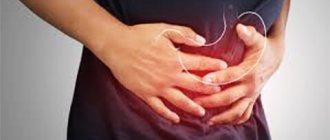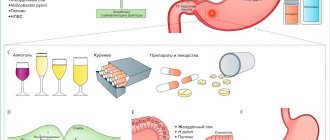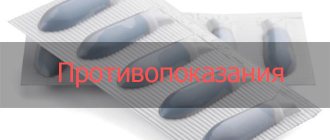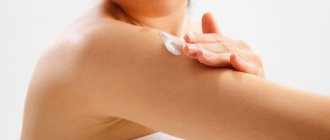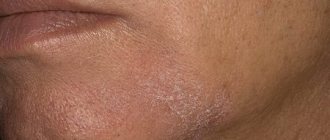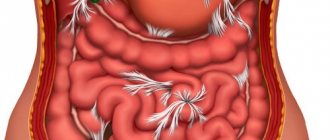Inflammatory changes in the upper gastrointestinal tract are rarely isolated. In most cases, damage to the duodenum is associated with gastric pathology. The symptoms of duodenitis and gastritis are similar. There are acute and chronic duodenitis of the duodenum, which differs in etiology and pathogenesis. Therefore, the approach to patient treatment must be individualized.
Structure
After the pylorus of the stomach comes the duodenum. It, like a horseshoe, goes around the head of the pancreas (PG), continuing into the jejunum. Its length is 25-30 cm. Fixation to the walls of the abdominal cavity is carried out due to connective tissue fibers. The duodenum is located in the projection of the XII thoracic – III lumbar vertebrae.
Divisions: superior (bulb or ampulla), descending, horizontal, ascending. The mucous membrane of the bulb is equipped with longitudinal folds, the remaining sections - transverse. When they contract, a bolus of food moves into the jejunum.
The greater or Vater's nipple opens into the duodenum cavity. It is formed by the fusion of the main pancreatic duct and the common bile duct. The papilla of Vater has a sphincter, with the help of which the flow of bile and pancreatic juice into the intestines is regulated. The minor nipple is located in the area where the accessory duct of the pancreas exits.
Folk remedies
Treatment of duodenitis with folk remedies is indicated together with the main therapy prescribed by the doctor after diagnosis. The following remedies are considered effective:
- Plantain juice and honey. To prepare the composition, you need to take 3 large spoons of plantain juice and 1 small spoon of honey. Mix everything and take 3 large spoons 3 times a day. This remedy is especially effective for erosive duodenitis.
- Decoction of oats and nettles. To prepare this folk composition, you need to take a glass of unpeeled oats and add 5 glasses of cold water to it. Place the oats on low heat and cook until a slimy broth appears in the container. Afterwards it needs to be cooled and thoroughly strained through cheesecloth. You also need to prepare a nettle decoction. It is prepared very simply: take a glass of dry nettle leaves and pour in 750 ml of boiling water. Then you need to wait 40 minutes for the broth to infuse and strain. The presented recipe involves the use of both leaves and decoction. The infusion can be taken as tea, and the leaves can be finely chopped and added to oatmeal broth. Take ½ glass before meals.
Functions
The duodenum performs several functions:
- Neutralization of acidic gastric contents. The bolus of food mixed with acidic gastric juice is neutralized in an alkaline environment. Due to this, irritation of the intestinal epithelium does not occur.
- Regulation of the formation of digestive enzymes, bile, pancreatic juice. In the duodenum, the contents are analyzed and the appropriate command is transmitted to the digestive glands.
- Relationship with the stomach: the duodenum ensures the opening and closing of the pylorus of the stomach, the entry of a new portion of the bolus of food into the small intestine. This occurs as the next amount of gastric contents is neutralized in the cavity of the duodenum.
Classification
In their daily work, various specialists (clinicians, endoscopists, pathologists) use different classifications of duodenitis. However, everyone stands out:
- acute form - characterized by a sudden and striking manifestation of symptoms, which, if detected in the early stages, can be eliminated within a few days, often thanks to diet therapy. Acute duodenitis can be caused by bad habits and poor diet;
- chronic form – is a consequence of untimely treatment of the previous form, and is also formed due to the chronic course of diseases associated with other organs of the gastrointestinal tract. The basis of therapy is the use of medications, and during the period of remission, adherence to a gentle menu.
According to the endoscopic picture, inflammation of the duodenum is divided into:
- atrophic duodenitis - in which thinning or death of the cells of the mucous membrane of the affected organ occurs, which causes a disruption in the secretion of digestive juices;
- hemorrhagic – characterized by the detection of duodenal bleeding during diagnosis;
- erythematous - expressed by significant swelling and severe redness of the mucous membrane;
- erosive or hypertrophic duodenitis - accompanied by the appearance of erosions of varying numbers and depths;
- nodular;
- hyperplastic duodenitis - characterized by increased division and proliferation of mucosal tissue. During endoscopic examination, a lumpy surface of the membrane is noted;
- reflux duodenitis - during which the contents of the small intestine flow back into the duodenum.
As the disease process spreads, this disorder is divided into the following types:
- superficial or catarrhal duodenitis - characterized by slight inflammation of the upper layers of this organ;
- proximal duodenitis is the complete opposite of the previous form, since inflammation spreads to the deeper layers of this organ, and the duodenal bulb is also involved in the process;
- distal duodenitis - almost completely similar to the proximal one, the only difference is that the bulb is almost unchanged;
- total or diffuse - with damage to the entire surface of the mucosa;
- focal duodenitis or limited - during diagnosis it is expressed by one or several foci of inflammation in various parts of the duodenal membrane;
- papillitis - this condition is spoken of when the inflammatory process affects the major duodenal papilla.
In addition, there are several specific and most rare types of inflammation of the duodenum. These include:
- tuberculous duodenitis;
- immunodeficient;
- caused by Whipple's or Crohn's disease;
- fungal;
- follicular duodenitis;
- consequence of intestinal amyloidosis.
What causes acute duodenitis
The reasons leading to the development of o. duodenitis:
- Dry food, eating food that has an irritating effect on the epithelium of the digestive tract: coffee, smoked foods, fried, fatty, spicy. To process such food, an increased amount of hydrochloric acid is formed in the stomach, which reduces the protective properties of the duodenum epithelium.
- Foodborne toxic infections caused by the bacterium Helicobacter pylori (which causes ulcers), staphylococci, enterococci, clostridia, as well as giardiasis, helminthiasis. Pathogenic bacteria lead to the development of inflammatory phenomena in the duodenal mucosa, damage to epithelial cells and their death. A large amount of fluid leaks into the intestinal lumen, which manifests itself as diarrhea.
- Diseases of the digestive system: colitis, hepatitis, cirrhosis, pancreatitis, ulcers, gastritis. Inflammation of nearby organs leads to the transition of the inflammatory process and the development of duodenitis (pancreatitis-duodenitis, gastritis-duodenitis). Another mechanism that causes inflammation of the duodenum is a disruption in the production of bile and pancreatic juice, without which the normal functioning of this organ is impossible.
- Reflux or backflow of the contents of underlying intestinal segments into the duodenum. This may occur due to spasm or obstruction (due to a tumor or other reasons) of the jejunum. Bacteria from the lower parts of the small intestine enter the duodenum, causing reflux duodenitis.
- Alcohol consumption.
- Ingestion of chemicals (acids, alkalis, chlorine-containing compounds) leading to burns of the intestinal epithelium.
- Mechanical damage to the duodenal mucosa due to ingestion of foreign bodies.
Causes
A moderate type of duodenitis can appear for reasons as trivial as poisoning. As you already understand, the main and most important reason for the appearance of moderate duodenitis is a violation of nutritional principles. The principles of proper and healthy nutrition are adjusting your own diet in such a way that it fully satisfies the body’s needs and sufficiently saturates it with all the necessary microelements, vitamins, fiber, and amino acids.
The current style and rhythm of life does not allow a modern person to eat not only correctly, but also on time. So, during the day a person should arrange for himself four meals a day. If the number of doses is reduced, the risk of gastritis and duodenitis increases significantly.
Menu adjustments also play an important role in the daily life of the average person. The diet should include a variety of foods containing protein, carbohydrates, and fiber in sufficient quantities. Therefore, you need to focus on meat and plant products equally.
Important: The ideal option for every person who cares about their health and well-being is to visit a nutritionist. He will help you choose the type of nutrition that suits you in the shortest possible time. It will also help you make a list of foods and dishes that are most preferable for the body at the moment.
The disease moderate duodenitis can appear in a person in the following cases:
- Violation of nutritional principles, frequent consumption of heavy foods that have no nutritional value;
- Alcohol abuse;
- Lack of physical activity, leading a passive lifestyle;
- Helicobacter bacteria (rare);
- Eating foods at an inappropriate temperature for digestion (excessively hot or cold);
- Frequent contact with chemicals at work;
- Abuse of spices;
- Consumption of foods containing aromatic synthetic additives and flavor enhancers;
- Consumption of energy drinks and sweet soda;
- Excessively reduced immunity.
Moderate duodenitis is much easier to prevent than an illness that has managed to develop into an acute form. Thus, knowledge of the symptoms and signs of the disease will allow you to provide first aid and promptly contact a specialist in this field.
What causes chronic duodenitis
Reasons leading to the appearance of chronic duodenitis:
- Intestinal pathology leading to deterioration of peristalsis, stagnation of intestinal contents, stretching of the walls and atrophy of the duodenum mucosa: prolonged constipation, intestinal adhesions, impaired blood supply and nervous regulation of the intestine.
- Chronic gastritis with high acidity causes acid damage to the intestinal epithelium with the gradual development of its atrophy. Gastritis-duodenitis is formed.
- An abnormality of the liver, gallbladder and pancreas leads to disruption of the release of enzymes into the lumen of the duodenum, which impairs its functioning.
- Regular violation of diet and nutrition.
- Food allergies.
- Prolonged stress.
- Taking a lot of medications.
- The presence of bad habits (drinking alcohol, smoking, substance abuse).
Prevention and prognosis
Measures to prevent duodenitis are quite simple:
- quitting smoking and alcohol abuse;
- diet;
- moderate physical activity;
- absence of severe stress, sufficient rest and sleep.
The prognosis of the disease is usually favorable: if you follow a diet and follow doctor’s prescriptions, you can get rid of exacerbations and live a full life.
If you ignore medical recommendations, the disease will progress. Over time, the absorption of nutrients will decrease, which can lead to exhaustion, deficiency of vitamins, iron and other important substances in the body. Chronic inflammation can cause scarring of the intestines, and chronic Helicobacter pylori infection can contribute to malignant degeneration of the mucosa.
Clinic
Manifestations of duodenitis depend on the cause of its occurrence and the presence of concomitant pathology. Often the disease is hidden under the guise of other ailments: stomach ulcers, gastritis, cholecystitis.
Symptoms of duodenitis in adults:
- Painful sensations in the epigastric region, aggravated by palpation (palpation) of the abdomen. Pain has its own characteristics in various forms of duodenitis: in the chronic form - constant, aching, worsening on an empty stomach and 1-2 hours after eating;
- with duodenitis caused by intestinal obstruction, the pain is bursting, paroxysmal, and occurs when the intestines are full;
- with gastritis-duodenitis with high acidity - develops 10-20 minutes after eating, which is explained by the entry of acidic gastric contents into the intestines;
- the ulcer-like form caused by Helicobacter pylori is characterized by fasting pain;
- with local inflammation around the nipple of Vater, the outflow of bile from the gallbladder is disrupted, resulting in a clinical picture similar to an attack of hepatic colic: pain in the right hypochondrium.
- nausea;
If the disease is asymptomatic, there may be no complaints; detection of pathology is an accidental finding during gastroduodenoscopy.
Complications of the disease
If symptoms are ignored, treatment is started late or inflammation of the duodenum is chronic, there is a possibility of complications such as:
- Intestinal obstruction is a condition in which the passage of food through the intestines is partially or completely stopped. It is accompanied by sharp pain in the upper abdomen, 15 minutes after eating, and repeated vomiting mixed with bile. This phenomenon can be caused by the proliferation of connective tissue and the formation of adhesions at the site of the inflammatory process.
- Maldigestion/malabsorption syndrome is a violation of the absorption of nutrients through the intestinal mucosa due to enzyme deficiency. The development of a complex of symptoms is associated with disruption of the glands of the digestive tract. This condition manifests itself in the early stages as diarrhea. Subsequently, exhaustion appears, changes in the composition of the blood - anemia, immunodeficiency - a decrease in the body's resistance to infections. Children have noticeable delays in physical development.
- Peptic ulcer of the duodenum. A deep defect forms on the wall of the duodenum - an ulcer. Its appearance is associated with the effect of hydrochloric acid and pepsin on the weakened mucous membrane. It manifests itself as pain in the upper abdomen during long breaks between meals, when drinking alcohol and exercising. Digestion is also disturbed: bloating, alternating diarrhea and constipation.
- Intestinal bleeding can be a consequence of erosive duodenitis. It is manifested by weakness, dizziness, drop in blood pressure, blood in the stool (discharge turns black).
But, despite the high probability of such complications, the prognosis for duodenitis is favorable. If the disease is detected in the early stages, a complete cure is achieved.
Diagnostics
The diagnosis of duodenitis is made if there is a combination of data:
- The presence of characteristic complaints described above.
- Inspection. When palpating (feeling) the abdomen, pain is noted in the projection of the duodenum.
- Instrumental examination data:
- FGDS (fibrogastroduodenoscopy) – scopic examination of the stomach cavity, duodenum. In the presence of duodenitis, characteristic signs are determined: (swelling of the mucous membrane, redness). Each form of duodenitis is characterized by its own characteristics of FGDS - pictures: a) with catarrhal (or superficial) duodenitis - uniform redness of the epithelium;
- b) the presence of erosions - with an erosive form;
- c) smoothness of the folds indicates a decrease in intestinal tone;
- d) nodules on the mucous membrane – about the nodular form;
- e) hemorrhages – hemorrhagic;
- f) atrophy of the epithelium - about atrophic.
- a) areas of narrowing indicate a tumor, adhesions, developmental anomalies;
- Laboratory data:
- a general blood test can determine an increase in ESR, indicating inflammation and anemia, as a sign of internal bleeding;
- biochemical blood test: in the initial stages of duodenitis, an increase in enzymes (esterokinase and alkaline phosphatase) will be noted, later their activity decreases;
- stool test for occult blood (will be positive in the presence of bleeding, maybe in the erosive form).
Features in children
The cause of duodenitis in children is most often dry eating, poor diet, as well as allergic reactions, hereditary predisposition (presence of the disease in parents), various toxic infections, parasitic diseases (helminthiasis, giardiasis), and colds.
Small children cannot correctly localize pain; they most often simply point to their stomach and say that it hurts. Among the symptoms, the most common are malaise, weakness, abdominal pain, nausea, belching, heartburn, and constipation. Exacerbation of duodenitis occurs more often in autumn and spring. In older children (10 years or more), the clinical picture does not differ significantly from adults.
The treatment is complex. If the cause of duodenitis is helminthiasis, deworming is a mandatory component.
conclusions
Symptoms of inflammatory bowel disease in most people mimic other diseases. Therefore, before treating the pathology yourself, you need to think about the consequences of improper therapy. The best solution is to consult a gastroenterologist. The specialist will prescribe an examination, based on which he recommends treatment. If superficial duodenitis is diagnosed, it is important to remember that this is a reversible process with a good prognosis. However, it is necessary to undergo treatment and prevention only under the supervision of a doctor, who will help cope with the problem and prevent the development of adverse consequences.
Treatment
The main tasks in the treatment of duodenitis:
- elimination of inflammation;
- prevention of process chronization;
- normalization of duodenum function;
- restoration of normal digestion.
Most often, treatment is carried out in a clinic. For recovery, a number of conditions must be met:
- stick to a diet;
- observe the work and rest schedule;
- avoid stress;
- give up bad habits (smoking, alcohol).
Indications for inpatient treatment:
- exacerbation of the disease;
- suspicion of tumor formation;
- danger of bleeding (with erosive form);
- severe general condition.
Treatment components:
- therapeutic nutrition;
- folk remedies;
- medicines;
- physiotherapy;
- use of mineral waters.
Nutrition
The menu for duodenitis plays a primary role in therapy. If you do not adjust your diet, relapses of the disease will occur again and again.
During exacerbation of the chronic form or o. For duodenitis, for the first 3-5 days you should follow table 1a according to Pevzner. The same diet is used to treat exacerbation of stomach ulcers. It is allowed to eat slimy cereal decoctions (rice, oatmeal), pureed soups, liquid porridge with half-and-half milk (first the cereal is boiled in water, so it swells faster and becomes more slimy, then add milk, the ratio of water and milk is 1/1).
Basic principles of nutrition:
- food should be: pureed, not hot, steamed
- frequent meals - 6 times a day, in small portions
- Avoid overeating and long breaks in meals
For example, let's look at diet 1a, scheduled for one day.
| Eating | Recommended dishes |
| 1st breakfast | Buckwheat porridge cooked with half-and-half milk (buckwheat - 50, milk and water - ½ cup each, butter - 10), milk - 1 cup |
| 2nd breakfast | Milk – 1 glass |
| Dinner | Milk cereal soup (oat flakes - 40, milk - ¾ cup, eggs - ¼ pcs, butter - 10, sugar 2, water - 1¾ cups), meat puree (boiled lean beef - 100, milk - 1/4 cup, butter – 10), dried apple compote (water – 200, dried apples – 20, sugar – 15) |
| Afternoon snack | Milk – 1 glass, soft-boiled egg |
| Dinner | Rice porridge cooked with half-and-half milk (rice – 50, milk and water – ½ cup each, butter – 10), egg “in a bag”, milk – 1 cup. |
| 2nd dinner | Milk – 1 glass |
Then the diet is gradually expanded.
Diet
It is better to avoid strongly spicy foods and alcohol to avoid relapse of the disease.
In case of chronic duodenitis, the diet will have to be followed even outside of exacerbations, so as not to provoke a relapse:
- Avoid hot seasonings, marinades, and smoked foods;
- Boil, bake or steam, in the microwave. Fry only as a last resort, on Teflon surfaces without adding fat;
- Prepare soups with vegetable broths. If you really want fish or meat bones, drain the first prepared broth and only cook the soup on the second;
- Vegetables and fruits should only be eaten cooked - boiled or baked. Coarse fiber irritates the intestines;
- The basis of the diet is protein from dairy products, eggs, poultry, lean fish, lean beef or rabbit.
In accordance with the form of duodenitis, it is recommended:
- ulcer-like form – table No. 1;
| 1st breakfast | Rice porridge with milk, sweet compote |
| 2nd breakfast | Yogurt |
| Dinner | Noodle soup, zrazy, beet salad, bread, jelly. |
| Afternoon snack | Pear compote |
| Dinner | Milk noodles |
| 2nd dinner | Milk – 1 glass |
- gastritis-like variant – table No. 2;
| 1st breakfast | Curd cheese, 1 glass of milk |
| 2nd breakfast | Baked pumpkin |
| Dinner | Vegetable soup, meatballs with mashed potatoes, dried fruit compote. |
| Afternoon snack | Rusks, rowan decoction |
| Dinner | Pollock stewed with vegetables |
| 2nd dinner | 1 glass of milk |
- Pancreatito- and cholecysto - similar form - table No. 5.
| 1st breakfast | Vinaigrette, a slice of yesterday's bread, tea with milk |
| 2nd breakfast | carrot juice |
| Dinner | Vegetable soup seasoned with low-fat sour cream, mashed potatoes with boiled fish, dried apricot compote |
| Afternoon snack | Milk 1 glass |
| Dinner | Cottage cheese casserole, weak tea with sugar |
| 2nd dinner | Kissel 1 glass |
Recommended Products:
- boiled lean meat, minced through a meat grinder or chopped with a blender;
- dairy and lactic acid products (milk, kefir, fermented baked milk, yogurt);
- boiled or baked vegetables, peeled, vegetable puree;
- eggs, boiled soft-boiled or prepared as an omelet;
- fats (butter, vegetable oil);
- juices;
- yesterday's bread and crackers (easier to digest than fresh baked goods);
- natural sweets (honey, mousse, jelly).
Products that stimulate gastric secretion and contain difficult-to-digest fibers are prohibited:
- raw fruits and vegetables;
- canned food, smoked meats;
- spicy dishes, seasonings, onions, garlic;
- rich fish, meat, mushroom broths;
- fatty meats and fish (duck, pork, carp, mackerel);
- ice cream;
- carbonated drinks;
- alcohol.
General information
Duodenitis is an inflammatory disease of the mucous membrane of the duodenum.
It is customary to distinguish between acute and chronic course of the disease. Acute duodenitis is characterized by pronounced symptoms of an acute inflammatory process, which responds well to drug therapy and leaves virtually no noticeable structural changes in the mucosal wall.
Chronic duodenitis has a long-term recurrent course. The chronic process affects the intestinal wall with the subsequent formation of a restructuring of its structure. Duodenitis in adults is the most common disease of the duodenum. The pathology is diagnosed 2 times more often in males compared to representatives of the fairer sex. In adult patients, 94% of all diseases of the duodenum become chronic.
Features of the course of the disease in childhood
Duodenitis in childhood most often develops due to excessive consumption of dry foods, with pronounced errors in the child’s nutrition. However, allergies, hereditary predisposition, parasite infection and infectious diseases cannot be ruled out.
Children often misread body signals and indicate that they have a stomach ache. Common symptoms of the pathology include nausea, weakness, constipation, heartburn, and belching. Exacerbations of the pathology occur in the spring and autumn seasons. In children over 10 years of age, symptoms of duodenitis are similar to those in adults.
Treatment should be comprehensive. When the cause of the disease is infection with parasites, you need to take deworming medications.
Pathogenesis
The mechanism for triggering the inflammatory process in the duodenum is directly related to damage to the mucous membrane by gastric juice , which comes from the stomach. A decrease in the protective ability of the intestinal wall against the background of the aggressive effects of hydrochloric acid leads first to irritation of the mucous membrane, and then to inflammation. An acute inflammatory process without pronounced symptoms can become chronic with periodic relapses. In this case, degenerative and atrophic changes are formed.
What is secondary duodenitis?
In secondary duodenitis, an important pathogenetic link in the triggering of pathology is duodenostasis , as a consequence of a functional digestive disorder, the presence of adhesions, insufficient peristalsis and compressive obstruction of the duodenum. Against the background of pathology of the pancreas, liver system and gall bladder, an enzyme imbalance is formed, which provokes a transformation of the homeostasis of the internal environment of the intestine, which becomes the basis of an inflammatory process with a chronic course. The duodenal papilla is affected as a result of pathological processes in the bile ducts.
Therapeutic measures
Treatment of superficial duodenitis involves an integrated approach using medications, diet and traditional medicine recipes. In addition, it is important to strictly follow all the doctor’s recommendations and instructions.
Drug treatment
The following medications may be required:
- Antispasmodics (Drotaverine, No-Shpa) - to relieve painful symptoms.
- Enveloping medications (Almagel, Maalox) – when inflammation of the duodenum is associated with erosive damage. Additionally, you can take Omeprazole, De-nol.
- Antiemetics (Domperidone, Motilium) - for vomiting, intramuscular administration of drugs is used.
- To reduce stomach acid - Gaviscon, Rennie.
- To reduce irritation on the mucous membrane, use Kvamatel, Famotidine.
- Antibiotics (Amoxicillin, Furazolidone) may be needed to eliminate Helicobacter pylori.
The disease can be cured if you additionally take medicinal infusions with calendula, chamomile, and more.
Symptoms
The first stage of development of superficial duodenitis occurs without any main symptoms, which makes diagnosis difficult. Since this form becomes a complication of a gastrointestinal disease that is present in the patient.
Therefore, symptoms of primary pathology are noted:
- nausea, rarely – vomiting;
- loss of appetite;
- short-term, cramping nature, pain;
- discomfort in the navel, abdomen;
- heartburn, colitis, flatulence, belching;
- bowel disorder (constipation followed by diarrhea);
- increased salivation, sweating;
- malaise, fatigue, dizziness;
- temperature increase.
When the inflammatory lesion becomes chronic from a superficial one, such symptoms weaken. And with an exacerbation, there is a high probability that the disease has increased the area of spread or inflammation has begun to damage the deepest layers of the duodenum.
